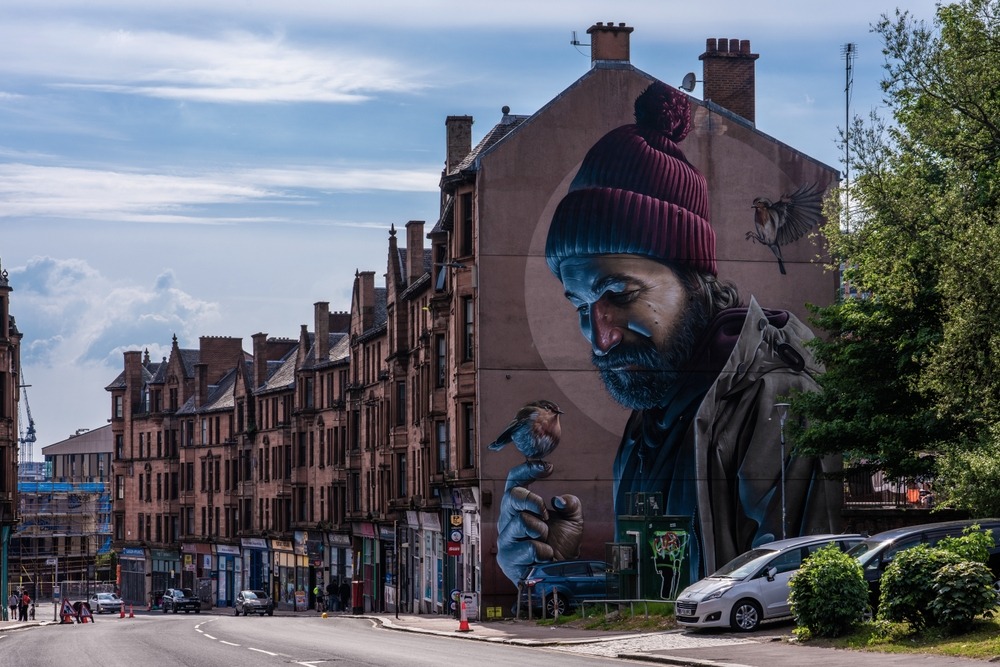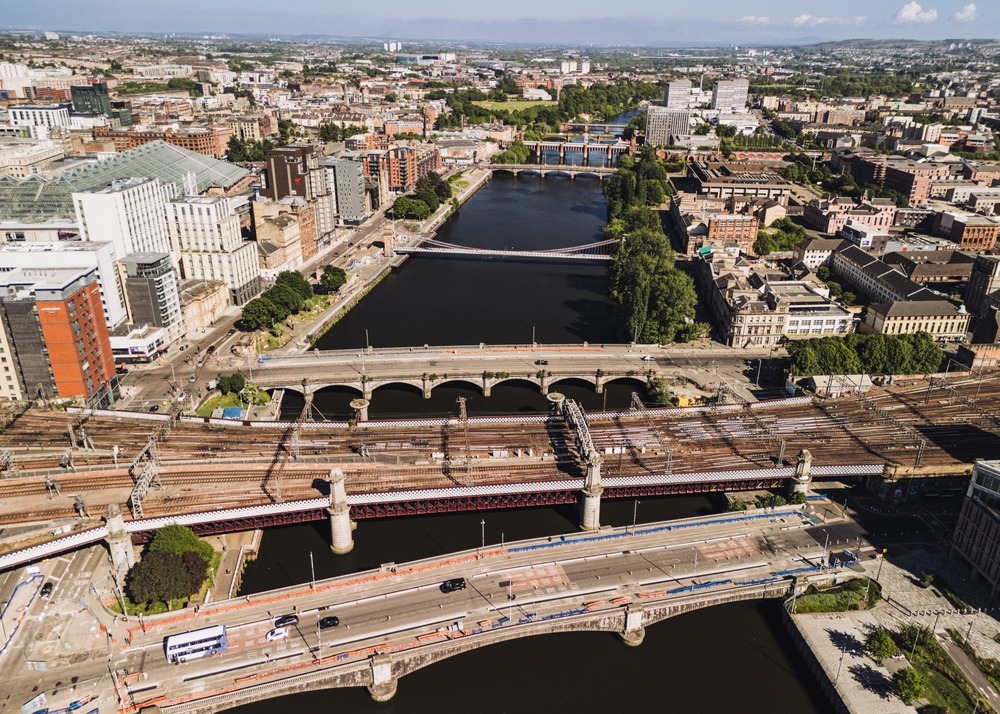Glasgow, Scotland: A City of Industry, Art, and Transformation
History of Glasgow
Glasgow’s origins trace back to prehistoric times, but the city as we know it began to take form in the 6th century when St. Mungo (also known as St. Kentigern) established a Christian settlement on the banks of the River Clyde. The area grew into a religious hub and by the 12th century, Glasgow Cathedral had been founded—one of the few medieval churches in Scotland to have survived the Reformation intact.
In 1451, Glasgow University was established by papal bull, becoming one of the oldest universities in the English-speaking world. Over the centuries, the city evolved from a modest ecclesiastical center into a burgeoning trading post, especially in the tobacco trade, which flourished during the 17th and 18th centuries. This economic foundation enabled Glasgow to expand rapidly during the Industrial Revolution.

By the 19th century, Glasgow had become a global industrial powerhouse, known for shipbuilding, heavy engineering, and textile production. The River Clyde served as the artery of commerce, linking the city to international markets and transforming it into the “Second City of the British Empire.” This golden era saw the rise of impressive Victorian architecture, wide boulevards, and grand civic buildings.
However, the 20th century brought significant challenges. Two World Wars and the decline of manufacturing led to economic stagnation and urban decay. Yet Glasgow’s spirit of resilience never faltered. By the late 20th century, it began reinventing itself as a cultural capital. Its designation as European City of Culture in 1990 sparked a wave of regeneration, with renewed investment in the arts, education, and tourism. Today, Glasgow is celebrated for its dynamic cultural scene, innovative design, and welcoming spirit.

Top 25 Local Attractions in Glasgow
-
Glasgow Cathedral – A masterpiece of Gothic architecture, this 12th-century cathedral is a sacred and historical gem.
-
The Necropolis – Just behind the cathedral, this atmospheric Victorian cemetery offers city views and insight into Glasgow’s past.
-
Kelvingrove Art Gallery and Museum – A beloved institution with everything from Renaissance art to natural history, all housed in a grand red sandstone building.
-
Riverside Museum – A striking Zaha Hadid-designed museum dedicated to transport and travel.
-
The Tall Ship at Riverside – A restored 19th-century sailing vessel moored beside the museum, offering a glimpse into Glasgow’s maritime heritage.
-
The University of Glasgow – Established in 1451, its main building resembles Hogwarts and offers public access to its impressive campus and Hunterian collections.
-
Hunterian Museum and Art Gallery – Scotland’s oldest public museum, featuring Roman artifacts, anatomical collections, and works by James McNeill Whistler.
-
People’s Palace and Winter Gardens – A social history museum set within a Victorian glasshouse on Glasgow Green.
-
Glasgow Green – One of the city’s oldest public parks, home to monuments, recreational areas, and scenic walkways.
-
The Burrell Collection – A world-class art and antiquities collection housed in Pollok Country Park.
-
Pollok House – A grand Edwardian manor with period furnishings, artwork, and a scenic riverside setting.
-
Gallery of Modern Art (GoMA) – Located in the city center, this gallery features cutting-edge contemporary exhibitions.
-
George Square – The civic heart of Glasgow, lined with statues of notable Scots and the grand City Chambers.
-
The Lighthouse – Scotland’s Centre for Design and Architecture, originally designed by Charles Rennie Mackintosh, with exhibitions and rooftop views.
-
House for an Art Lover – A posthumously built Mackintosh-designed house, combining architecture, gardens, and exhibition space.
-
Sharmanka Kinetic Theatre – A unique and hauntingly beautiful mechanical theatre that combines sculpture and performance.
-
Glasgow Science Centre – An interactive science museum with a planetarium and IMAX cinema on the Clyde waterfront.
-
Scotland Street School Museum – Another Mackintosh gem, offering insight into early 20th-century education.
-
Clydeside Distillery – A working whisky distillery and visitor center in a historic pump house beside the River Clyde.
-
Merchant City – A vibrant district filled with restaurants, galleries, designer shops, and heritage buildings.
-
Buchanan Street – Glasgow’s main shopping thoroughfare, known for its style, architecture, and street performers.
-
The Barras Market – A bustling weekend market in the East End with vintage wares, street food, and local flavor.
-
Celtic Park and Ibrox Stadium – The homes of Glasgow’s two iconic football clubs, steeped in sporting tradition and fierce rivalry.
-
The SEC Centre and OVO Hydro – Scotland’s top venue for concerts and events, located along the Clyde.
-
Ashton Lane – A picturesque cobbled lane in the West End lined with cozy pubs, boutique cinemas, and trendy eateries.

































